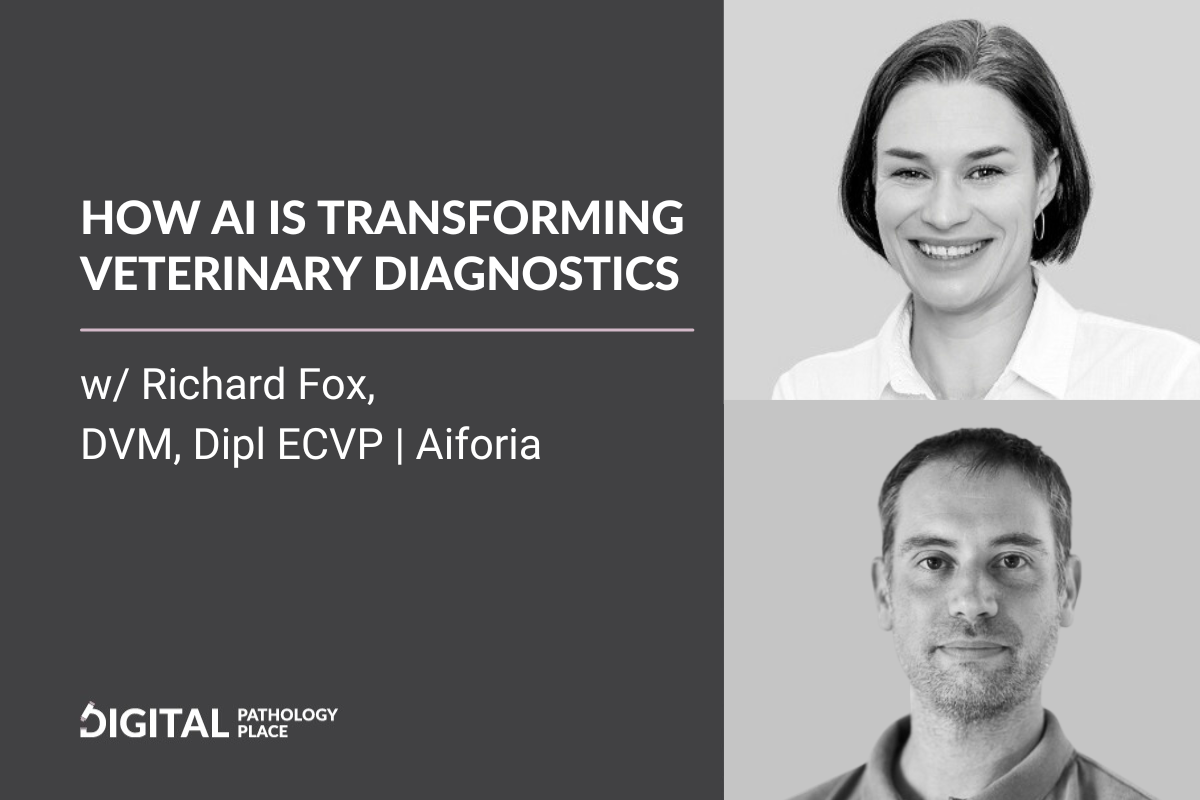So that’s kind of how I got into the AI. But the only trouble with fitting in AI and veterinary diagnostics is time.
So I wanted to do more AI. We didn’t have the time to give me. So then I decided to split my role between the two so I could get more [00:08:00] experience in doing AI work. So essentially that’s how I got into working for Aiforia. I applied for their, their, job and through subsequent, many interviews I eventually got the position.
So that’s kind of where how I’ve got into AI, I suppose from my background. I, I’m actually a photographer as well. So I do a lot of…
Aleks: Oh really…
Richard: …a landscape. So imagery has been…
Aleks: Actually I did see your website. I did, because you have it linked on LinkedIn, right?
Richard: Yeah, so I’ve been doing that for 12 years now. So I’ve been doing a lot of landscape photography.
And so imagery and colors have always been part of my life, I suppose. And digital image is a major part because in Finn we became digital, fully digital on Histopath 8 years ago. So we did it quite early.
Aleks: Oh my goodness, congratulations.
Richard: Wait, so I was employed at Finn. I changed my [00:09:00] jobs and I was actually employed to help digitize, Finn pathologists with two other pathologists.
So we were, we were the guinea pigs.
Aleks: And that was, which year was that?
Richard: That was, well, that was eight years ago, so.
Aleks: It’s going to be 2016.
Richard: Yeah, 2016. That’s when yeah.
Aleks: Congratulations. I want to emphasize that because that’s very early in terms of the digital pathology adoption and I sometimes give this presentation where I show the digital pathology timeline and I’m always emphasizing that before there was an FDA clearance for a human pathology lab, veterinary pathology labs were already digitized and it was the same system.
So the clearance was for Philips IntelliSight and IDEXX was using the same system. So I don’t know what systems you guys were using.
Richard: So, but I think the main reason for us digitizing was [00:10:00] recruitment because It’s trying, I mean, there aren’t very many veterinary diagnostic centers around. So if you’re, if you’re a sort of middle-aged pathologist with children, moving from one area to another is not easy, is it?
So I think that the main reason, certainly why FINN decided to digitize, was to allow easier recruitment. because you could get offsite workers then. So, I think that was, that was critical. And we increased our pathologists, you know, quite considerably just by going digital, so that they didn’t have to move.
So, we’ve kind of had a 50-50 split. But since COVID, I think a lot of people have actually enjoyed working away from the office and, and…
Aleks: Yes.
Richard: …we have more remote workers now than we had because before we had a lot of on site, you know, come up with 50-50 split really.
Aleks: And that’s also, I think it’s a mental and societal shift for this to [00:11:00] be accepted and now like required by people who, who are being approached by recruiters, right?
I know it is my requirement. Okay. If I get a potential job offer, my first question is, is it remote? If not, we don’t need to waste time talking about it.
Richard: Yeah.
Aleks: So, it is now a huge driver of being competitive in the market, just being, being digital for pathology, for digital pathology.
Richard: I do miss the interaction of people. It’s a lot easier. It’s nicer to interact with people than it is working offsite. But then you get a lot more work done offsite because you have less distractions and less, you know, less interruption. So it’s, you know, it’s a real balance, isn’t it really?
Aleks: I moved all my interactions to digital, to Microsoft teams.
Oh my goodness. Like I, I call people, I send them screenshots. I’m like interacting with more [00:12:00] people than I used to when I was on site.
Richard: That’s true.
Aleks: And, but it’s something, you know, that comes kind of with, what tools you, you started working with. And then obviously there’s like probably the generations of pathologists after me.
They’re not that digitally native in terms, of other tools than just viewing the digital images. And people who are younger than me, they’re, it’s going to be like, they’re going to blow our minds.
Richard: The younger patholigst will just be normal.
Aleks: I recently talked to a, colleague’s daughter. She’s, my colleague is a veterinary pathologist as well, and her daughter is 13.
In terms of like technologies information, you talk to a 13-year-old, like to an adult, and you can ask questions and, and like detailed information about technologies [00:13:00] and, like, really better than, than, than people a lot older. So this is an interesting shift as well. Okay, going back to…
Richard: You do most of your learning when you’re very young, aren’t you? You absorb it. Right. When you’re young. It’s not difficult to learn, is it?
Aleks: It was funny. I was talking to her and she was like, I’m like, how do you even know that? And she’s like, We have internet. Yeah, I have internet too, but I guess I didn’t have it when I was 13. So that’s the difference. Yeah, so. That was an interesting interaction.
Okay, so that was, that’s interesting. So, first thing that’s interesting and, relevant to our conversation. I mean, it’s a relevant conversation in general, but the first thing, okay, you decided you needed AI to help you in the diagnostics, but you didn’t have the capacity to do it. So there was an option to outsource it.
And [00:14:00] there was an option [00:14:00] to work with a, highly specialized team in your specialty, right? With, Also fellow veterinary pathologists and with a team that’s used to doing these projects. So this is something that, Aiforia offers. And, that’s an excellent intro to AI for people who actually have to keep doing their job and keep, you know, like contributing in their current position, but you are so fascinated that you decided to spend more time doing AI.
So like, you guys decided to outsource or selected your use case for the KI-67 and. So can you explain how important this selection was or is in general in veterinary pathology? Specifically for diagnostics. So is there did you need to develop it from scratch or is there already a wide? selection available How does that [00:15:00] work in the diagnostic space?
Richard: I think, I think we’re in a state of flux at the moment because AI is still in quite a youthful stage. I think the idea, I mean, certainly with my experience at Aiforia is that, you know, obviously we’re developing a lot of models, we’re developing a lot of demos and things like that, but there comes a point where you think, can I use this previous annotations and training to what we could transfer, learn, and Into other situations where those models actually might perform quite well, but on different tissues.
So, but at the moment, certainly in the sort of VET area, I mean, obviously we do KI67 quite a lot in the human field. So, you know, that’s quite established from an AI point of view, but obviously from the VET point of view, we’re still in very preliminary stages. So, obviously tumors don’t really get mast cell tumors very often, whereas dogs [00:16:00] get mast cell tumors quite, quite a lot.
So there wasn’t really that any of those developed models, certainly for mast cell tumors that have been previously made by Aiforia. So we had to start from scratch. So this was a new, a new model that was developed, for us. The result of that piece, well, there was, there was two stages.
We developed quite, quite a nice model and it was working nicely and we were getting everything together.














